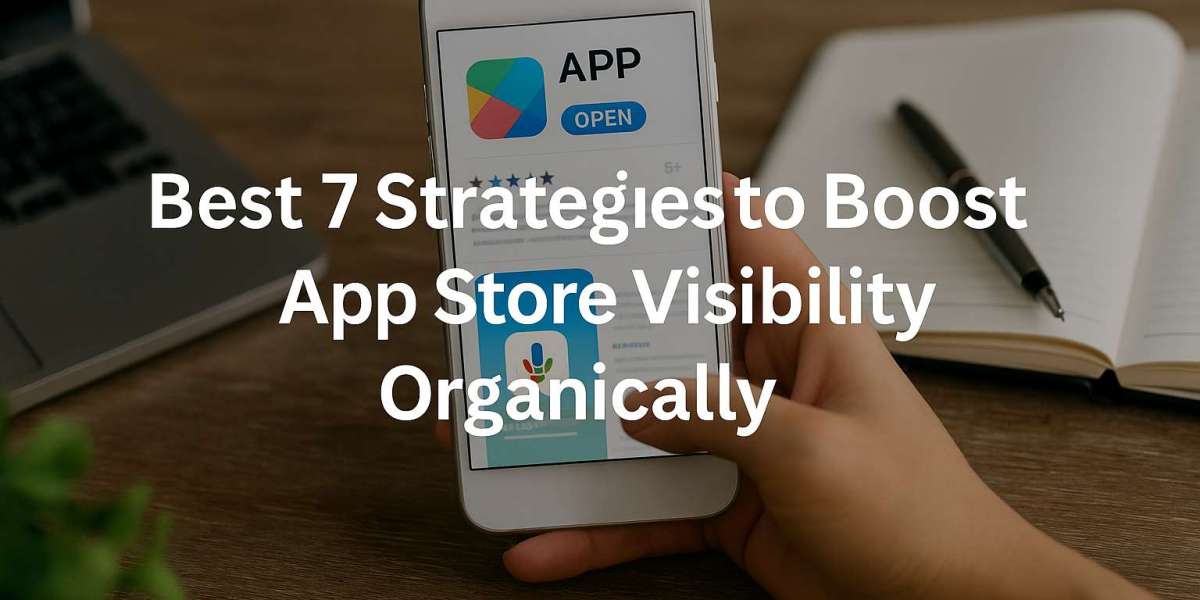In the highly competitive mobile application market, merely creating a brilliant app is often not enough. For an app to succeed, it must be discovered by its target audience amidst millions of others. While paid advertising can offer a quick boost, sustainable, long-term growth in downloads and user engagement often comes from organic visibility within app stores. This is where App Store Optimization (ASO) and other organic strategies become crucial.
For any Mobile App Development team aiming for enduring success, mastering these organic visibility strategies is paramount. They allow your app to be found by users actively searching for solutions, leading to higher conversion rates and more loyal users.
Here are 7 best strategies to boost your app's visibility organically:
1. Master App Store Optimization (ASO) Fundamentals
ASO is the process of optimizing your app's presence in the app stores to improve its discoverability and ranking. It's the equivalent of Search Engine Optimization (SEO) for websites, but tailored for app stores.
Keyword Research and Optimization: This is the bedrock of ASO.
- How it works: Identify relevant, high-traffic keywords that your target audience uses to search for apps like yours. Utilize ASO tools (e.g., Sensor Tower, AppTweak, App Radar) to research keyword volume, difficulty, and competitor usage.
- Implementation: Strategically integrate these keywords into your app's title, subtitle (iOS), short description (Android), and keyword field (iOS). For Google Play, the long description is also crucial for keyword indexing. Avoid keyword stuffing; aim for natural, readable language.
- Why it boosts visibility: App store algorithms heavily rely on these keywords to match user searches with relevant apps. Effective keyword optimization ensures your app appears higher in search results for your target queries, directly leading to more organic impressions and downloads.
Compelling App Title and Subtitle: These elements are critical for both discoverability and conversion.
- How it works: Your app title (and subtitle for iOS) should be concise, memorable, and include your most important primary keywords. It must clearly convey the app's core function or unique selling proposition.
- Why it boosts visibility: These are highly weighted by app store algorithms for ranking. A strong, keyword-rich title increases your app's relevance for searches. A compelling subtitle can differentiate your app and entice users to click on your listing even if it's not the top result.
2. Optimize Visual Assets (Icon, Screenshots, Videos)
Visuals are often the first thing a user sees and are critical for converting impressions into downloads.
App Icon:
- How it works: Design a unique, recognizable, and visually appealing icon that stands out in search results and accurately represents your brand and app's purpose. It should be simple, scalable, and impactful.
- Why it boosts visibility: A great icon increases click-through rates (CTR) from search results. Higher CTR signals to app store algorithms that your app is more relevant and appealing, indirectly boosting its ranking.
High-Quality Screenshots and Preview Videos:
- How it works: Showcase your app's best features, intuitive UI, and core benefits through a series of high-resolution screenshots. For videos, create a short, engaging preview that demonstrates the app in action, highlighting key functionalities and the user experience.
- Why it boosts visibility: These visuals are crucial for convincing potential users on your app's product page. Clear, persuasive visuals improve conversion rates (visitors to downloaders). App stores value apps with high conversion rates, as it indicates a relevant and desirable product, which can positively influence organic rankings.
3. Drive Positive User Reviews and Ratings
Social proof is incredibly powerful in the app stores. Positive reviews and high ratings build trust and signal quality.
- How it works: Encourage satisfied users to leave ratings and reviews at opportune moments within the app (e.g., after a positive experience or completing a key task, but without interrupting their flow). Implement in-app prompts that are subtle and easy to dismiss.
- Response Strategy: Actively monitor and respond to all reviews, both positive and negative. Thank users for positive feedback and offer solutions or apologies for negative ones. This shows you value user input and are committed to improving the app.
- Why it boosts visibility: App store algorithms heavily weight ratings and the volume of recent reviews as indicators of app quality and user satisfaction. Higher ratings lead to better search rankings and increased visibility in "Top Charts" and "Featured" sections. Positive reviews also act as strong social proof, encouraging more downloads from new users. Google Play even indexes keywords within reviews, further enhancing discoverability.
4. Implement Regular App Updates
Keeping your app fresh and functional is not just good for users; it's vital for organic visibility.
- How it works: Release regular updates that include bug fixes, performance improvements, new features, and compatibility adjustments for the latest OS versions. Clearly communicate these changes in your app store "What's New" section (changelog).
- Why it boosts visibility: App stores favor apps that are actively maintained and continuously improved. Regular updates signal to the algorithms that your app is relevant, reliable, and provides ongoing value, which can positively impact rankings. It also encourages existing users to stay engaged and potentially leave new, positive reviews.
5. Localize Your App Store Listing
Reach a global audience by tailoring your app's presence to different languages and cultures.
- How it works: Translate your app's title, subtitle, keywords, and description into multiple languages relevant to your target markets. Go beyond direct translation; adapt the language, tone, and cultural nuances (e.g., using relevant regional phrases or avoiding culturally insensitive imagery). Localize screenshots to show the app in context for that region.
- Why it boosts visibility: This significantly expands your app's organic reach. Users in non-English speaking markets are far more likely to discover and download apps listed in their native language. It demonstrates respect for diverse user bases and can lead to a substantial increase in downloads from international markets. For a Mobile App Development team with global ambitions, localization is a non-negotiable.
6. Drive External Traffic Strategically
While ASO focuses on in-store visibility, external traffic signals value to the app stores and can directly influence rankings.
- How it works: Promote your app through various channels outside the app stores:
- Website/Blog: Create a dedicated landing page for your app on your website with clear call-to-action buttons for app store downloads. Optimize this page for SEO to attract organic search traffic.
- Social Media: Actively promote your app on relevant social media platforms. Share engaging content, behind-the-scenes glimpses, and user testimonials. Encourage sharing and direct links to your app store page.
- Content Marketing: Create blog posts, videos, or infographics that provide value to your target audience and naturally weave in mentions and links to your app.
- Earned Media/PR: Reach out to tech journalists, app review sites, and relevant industry blogs to get your app featured. Positive media coverage can drive significant organic traffic.
- Why it boosts visibility: App stores monitor external traffic and downloads. A surge in downloads originating from outside the app store can signal strong interest and relevance, leading to improved organic rankings. It also broadens your app's discoverability beyond the confines of the app stores.
7. Monitor and Iterate Continuously (A/B Testing)
ASO is not a one-time task; it's an ongoing process of analysis, adaptation, and optimization.
- How it works: Utilize app store analytics (App Store Connect, Google Play Console) and third-party ASO tools to monitor key metrics: keyword rankings, search visibility, conversion rates, download trends, and user engagement. Based on this data, conduct A/B tests on different elements of your app listing (e.g., try different icons, screenshot orders, or variations of your subtitle/description).
- Why it boosts visibility: The app store algorithms and user preferences are constantly changing. Continuous monitoring allows you to identify what's working and what's not, adapt to new trends, and maintain a competitive edge. A/B testing provides data-driven insights to refine your ASO strategy, leading to incremental but significant improvements in organic visibility and conversion over time.
Conclusion
Achieving organic app store visibility is a multi-faceted endeavor that combines technical optimization with strategic marketing and a deep understanding of user behavior. By diligently implementing these 7 strategies – from mastering ASO fundamentals and optimizing visual assets to cultivating positive reviews, releasing regular updates, localizing content, driving external traffic, and continuously monitoring performance – any Mobile App Development team can significantly boost their app's discoverability. This organic growth leads to more loyal users, reduced marketing costs, and ultimately, sustainable success in the competitive app ecosystem.







